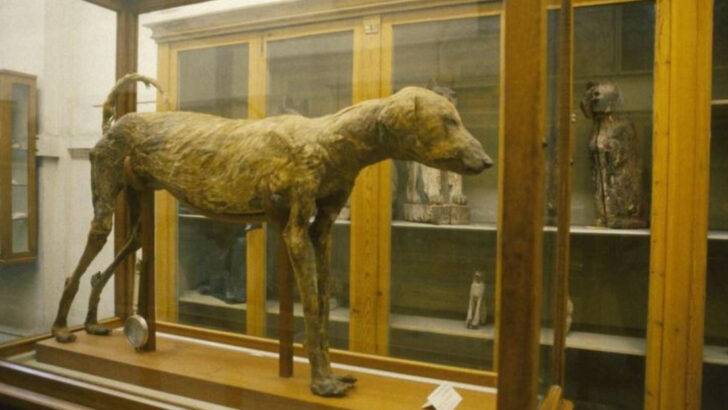It’s easy to think of dog breeds as timeless—loyal companions that have always been by our side. But the truth is, the list of breeds we know today is just a snapshot in a much longer history. Some breeds that were once common have completely disappeared, leaving behind only a few photos, old records, and stories passed down through generations.
Each of these lost breeds has its own backstory. Some were shaped by a specific job or lifestyle that no longer exists. Others faded away because of changes in breeding trends or were simply absorbed into newer breeds. Looking at what led to their disappearance offers an interesting lens on how our lives, needs, and preferences have shifted over time—and how closely dogs have always followed along.
Molossus
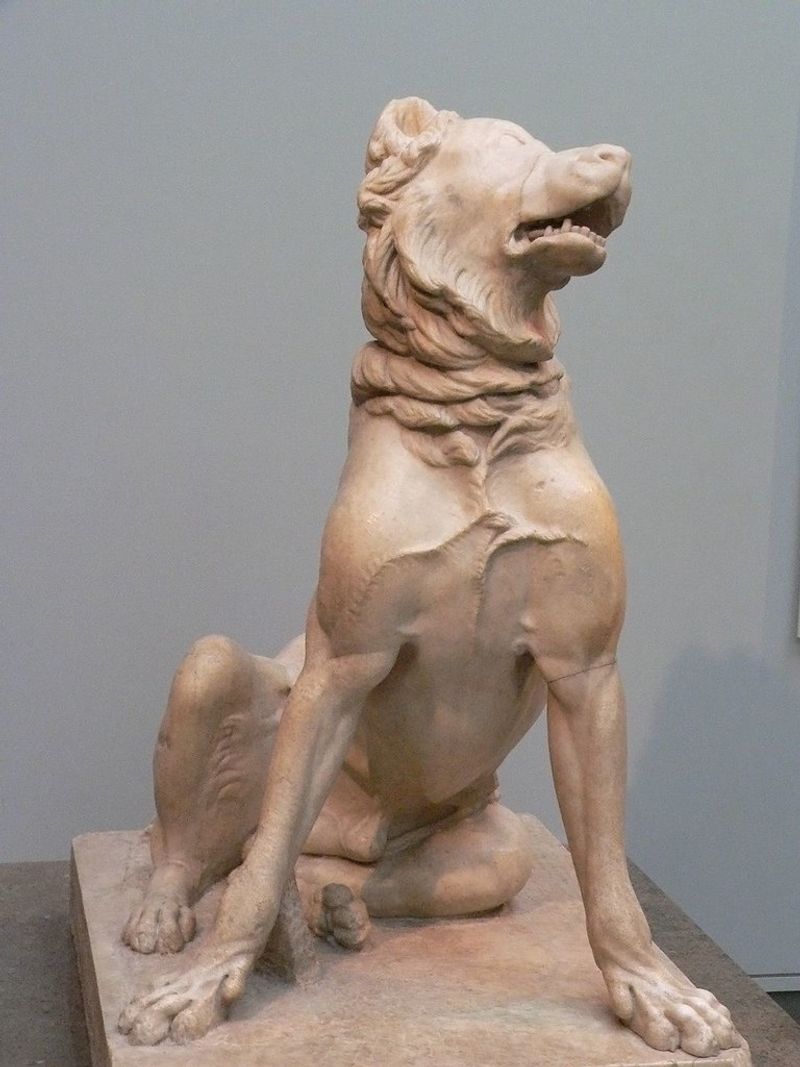
The Molossus was a warrior’s best friend, known for its immense strength and loyalty. This ancient Greek breed was often seen alongside soldiers, embodying the very essence of bravery. Picture a muscular, powerful canine, guarding its master with an unwavering gaze.
Revered throughout the Roman Empire, the Molossus was not just a protector but a symbol of might. Its loss has left a void in the tapestry of history, where warriors and their dogs once stood united.
Today, the echoes of the Molossus linger in the ancestry of many mastiff breeds, a testament to its enduring legacy.
Tweed Water Spaniel
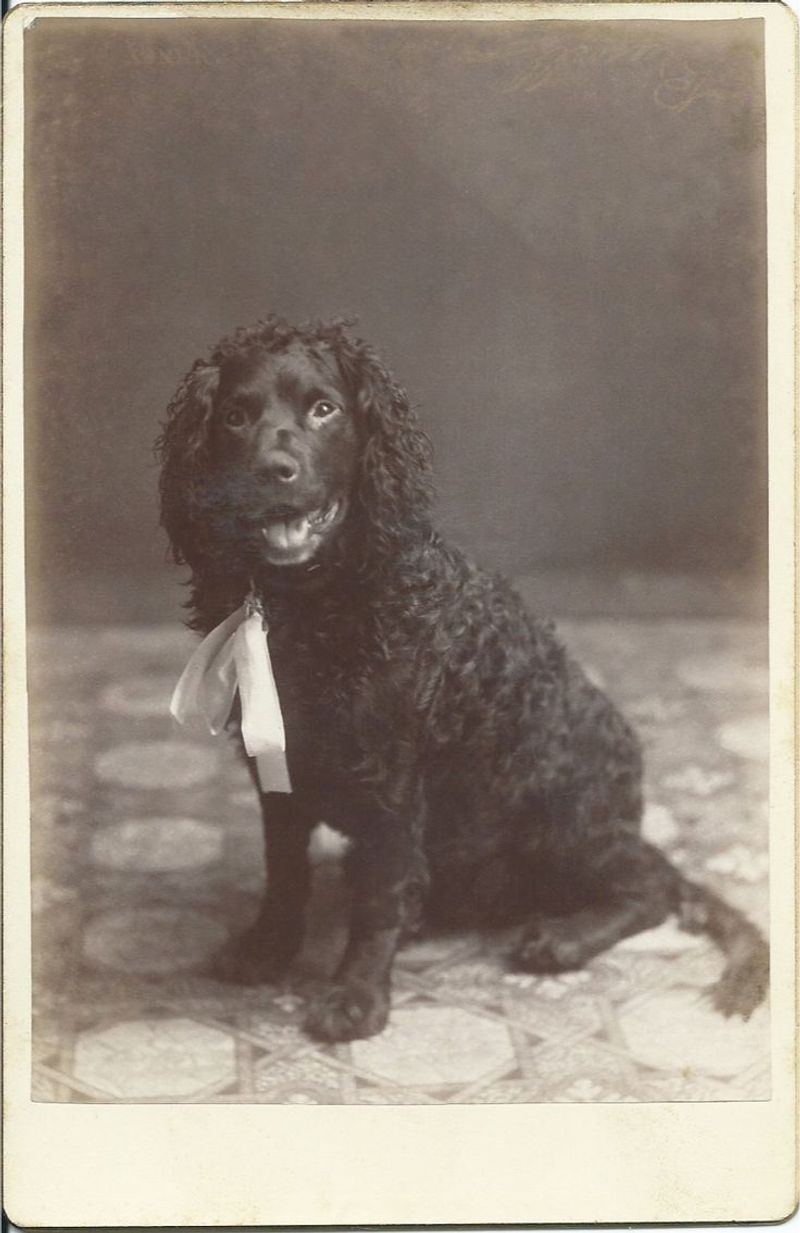
The Tweed Water Spaniel was a spirited breed, known for its exceptional swimming ability and affinity for water. Hailing from the Scottish Borders, this breed was adored by hunters for its agility and intelligence.
With its curly brown coat, it was perfectly suited to the wet and cold climate of its homeland. Unfortunately, the breed disappeared in the late 19th century, primarily due to crossbreeding with other spaniels to create the Golden Retriever.
Although its legacy lives on, the Tweed Water Spaniel’s unique characteristics are missed by spaniel enthusiasts and historians alike.
St. John’s Water Dog
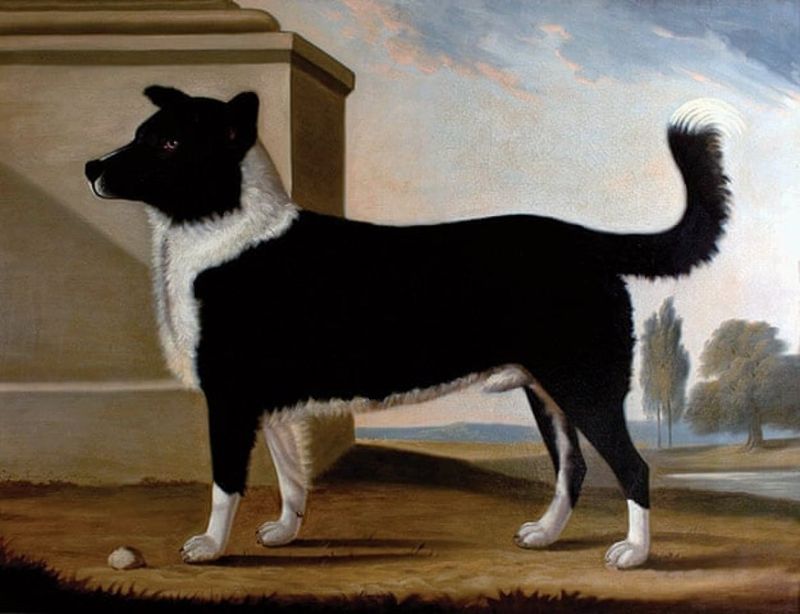
The St. John’s Water Dog was a fisherman’s dream, adept at retrieving nets and diving into icy waters. Its boundless energy and intelligence made it an invaluable companion in the rugged terrain of Newfoundland.
With a thick, water-resistant coat and a love for the ocean, these dogs were the unsung heroes of the fishing industry. The breed’s decline was a result of crossbreeding and changing fishing practices.
Though extinct, its spirit lives on in the Labrador and Golden Retriever, breeds that continue to bring joy to millions worldwide.
Alpine Mastiff
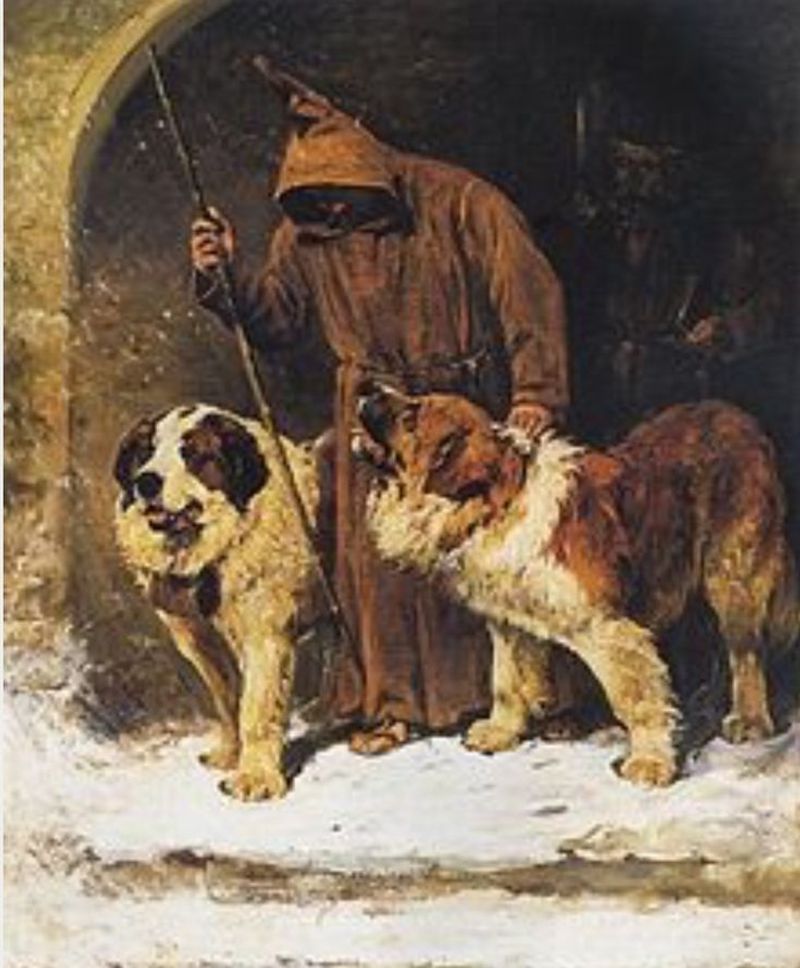
The Alpine Mastiff was a giant among dogs, both in size and spirit. Originating from the Swiss Alps, this breed was known for its strength and loyalty, often being used to guard estates and accompany travelers through treacherous mountain paths.
Its imposing presence was matched by a gentle temperament, making it a beloved companion. Sadly, by the mid-19th century, the breed dwindled due to interbreeding with other mastiffs and the changing needs of alpine communities.
The Alpine Mastiff’s legacy continues in the Saint Bernard, but its pure form is a fascinating loss to canine history.
Tahltan Bear Dog
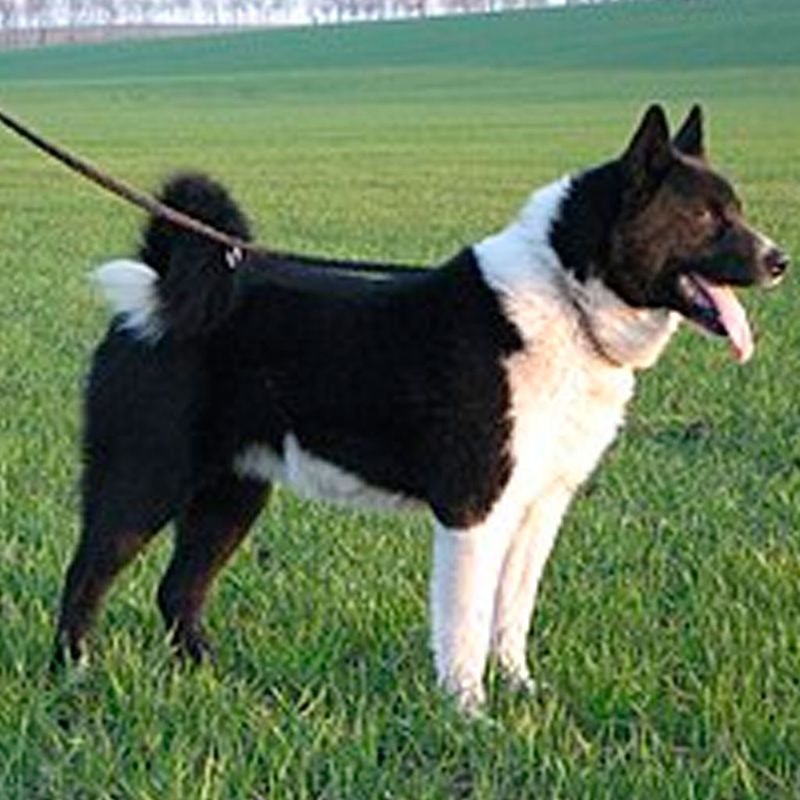
The Tahltan Bear Dog was a fearless hunter, small yet mighty, known for its agility and courage. Used by the Tahltan people of Canada, this breed specialized in hunting bears, a true testament to its bravery.
With a keen sense of smell and unparalleled determination, it navigated the dense forests with ease. Its extinction is a loss to the indigenous cultures that relied on it for survival.
Today, we honor the Tahltan Bear Dog as a symbol of resilience and the deep bond between humans and their canine companions.
Talbot Hound
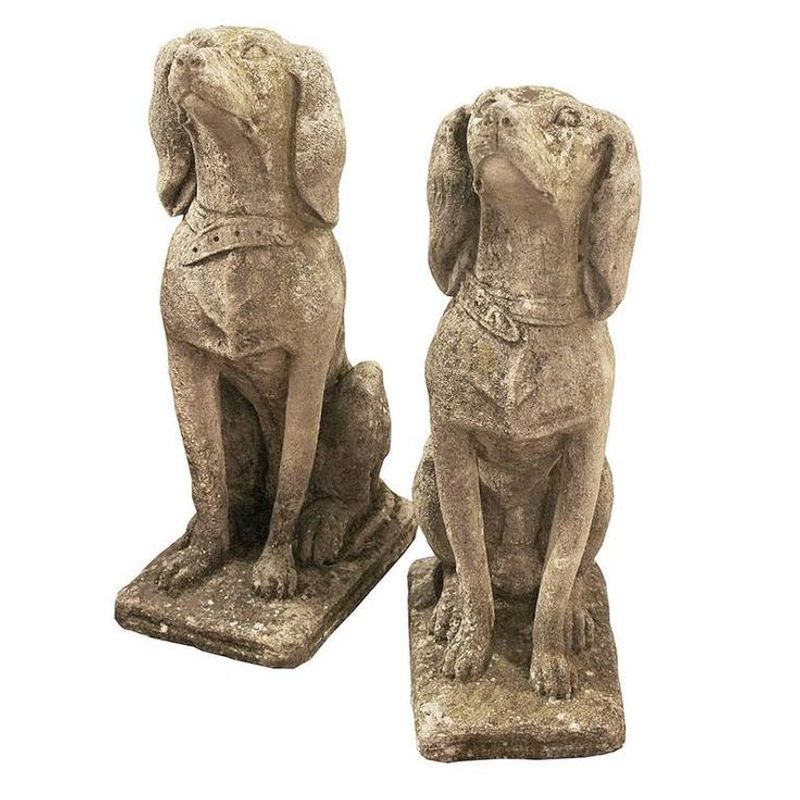
The Talbot Hound was a symbol of nobility, often depicted in medieval tapestries and heraldry. Known for its keen sense of smell and distinct white coat, the Talbot was the quintessential hunting dog of its time.
With a melodious bay, it could track scents for miles, making it invaluable in hunts. Over time, as hunting practices evolved, the Talbot was gradually phased out, contributing to the development of the modern Beagle.
Though it no longer roams the forests, the Talbot Hound’s legacy endures in the annals of hunting lore and canine evolution.
Paisley Terrier
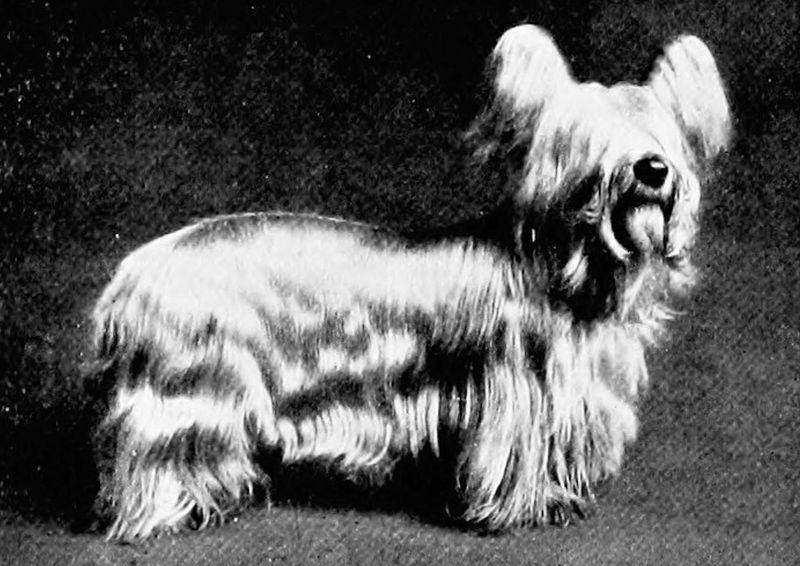
The Paisley Terrier was the Victorian era’s lapdog of choice, prized for its elegant appearance and gentle demeanor. With a silky coat and an endearing expression, it graced the homes of the elite.
Despite its beauty, the breed faded away, overshadowed by the more popular Yorkshire Terrier. Yet, its legacy lives on in the elegance and charm of its descendants.
The Paisley Terrier reminds us of a bygone era of sophistication and the timeless bond between fashion and canine companionship.
Cumberland Sheepdog
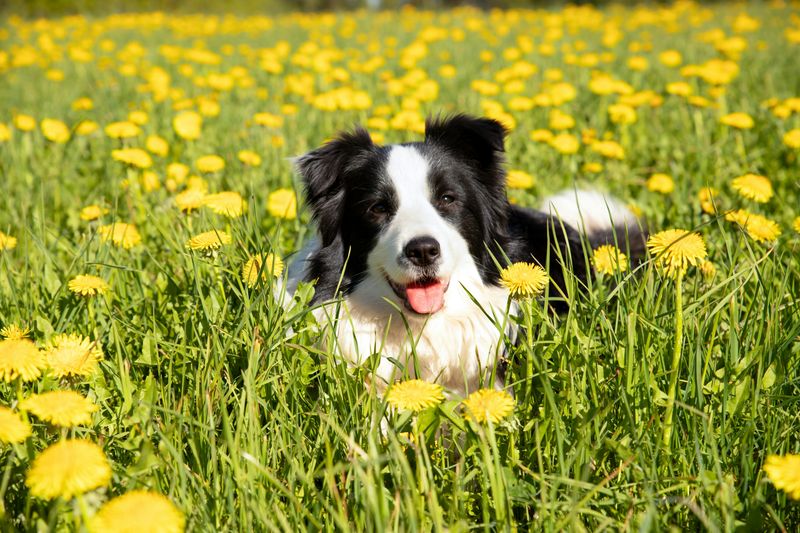
The Cumberland Sheepdog was a shepherd’s partner, known for its herding prowess and unwavering loyalty. This robust breed roamed the English countryside, ensuring the safety of flocks.
With intelligence and stamina, it was a vital tool for farmers. However, as agriculture evolved, so did the need for different herding dogs, leading to the breed’s decline.
Its spirit endures in the Border Collie, a breed that carries on its tradition of excellence in herding and dedication to its human companions.
Salish Wool Dog
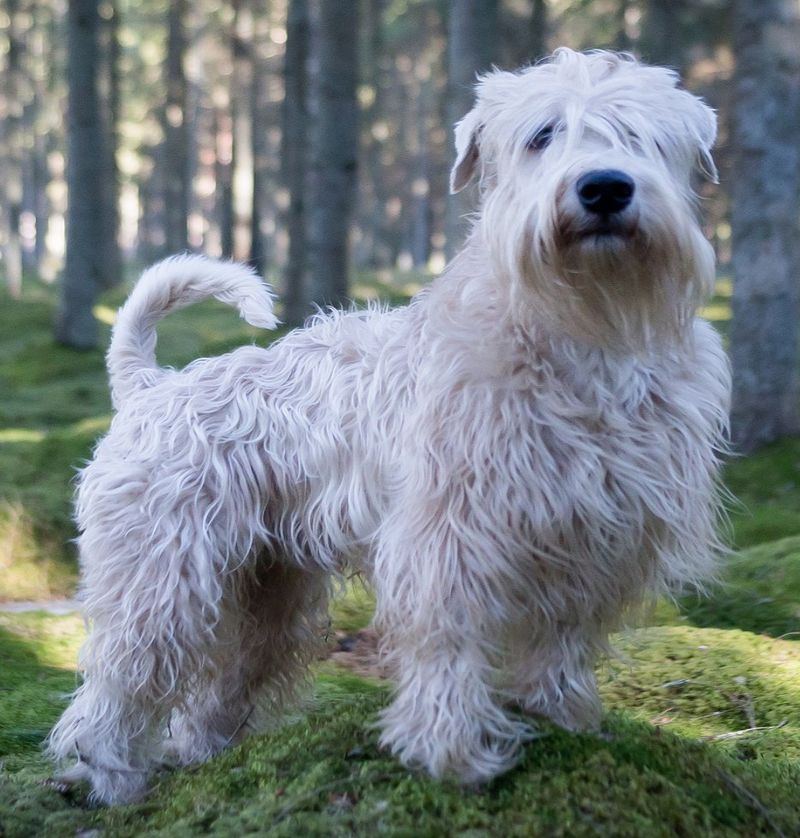
The Salish Wool Dog was more than a pet; it was a vital part of the Salish people’s culture. With its thick, white coat, it provided wool for weaving blankets, a unique role among dog breeds.
These dogs were cherished, carefully bred, and their extinction marked the end of a cultural practice deeply rooted in tradition. The loss of the Salish Wool Dog is a reminder of the interconnectedness of species and human traditions.
Though gone, its impact on the craft of weaving and the heritage of the Salish people is remembered and celebrated.
Blue Paul Terrier
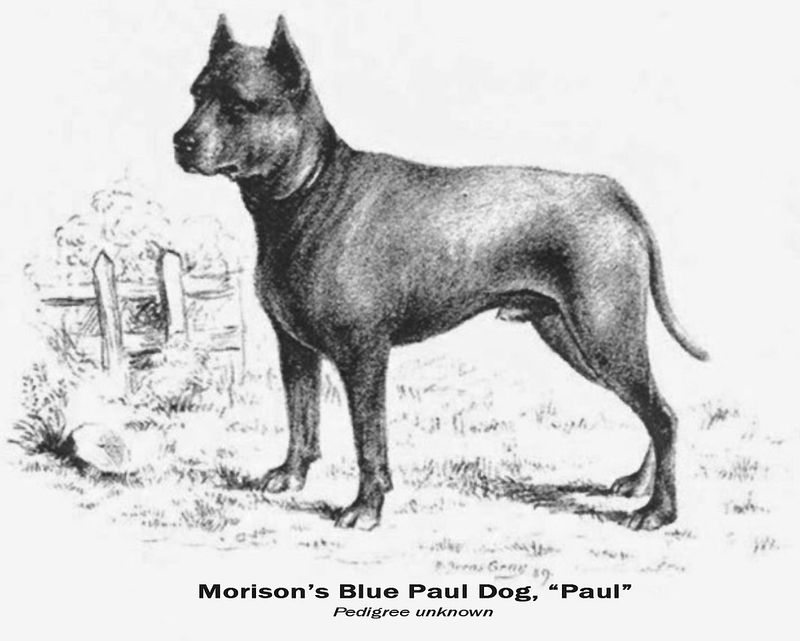
The Blue Paul Terrier was a Scottish legend, known for its strength and tenacity. This muscular breed, with its distinctive blue-grey coat, was a favorite among sailors and dock workers.
Its reputation as a fierce fighter overshadowed its gentle nature at home. As bull-baiting fell out of favor, the breed’s numbers dwindled, leading to its extinction.
Today, the Blue Paul Terrier is a symbol of Scotland’s maritime history and the complex relationship between humans and their canine companions.
Hare Indian Dog
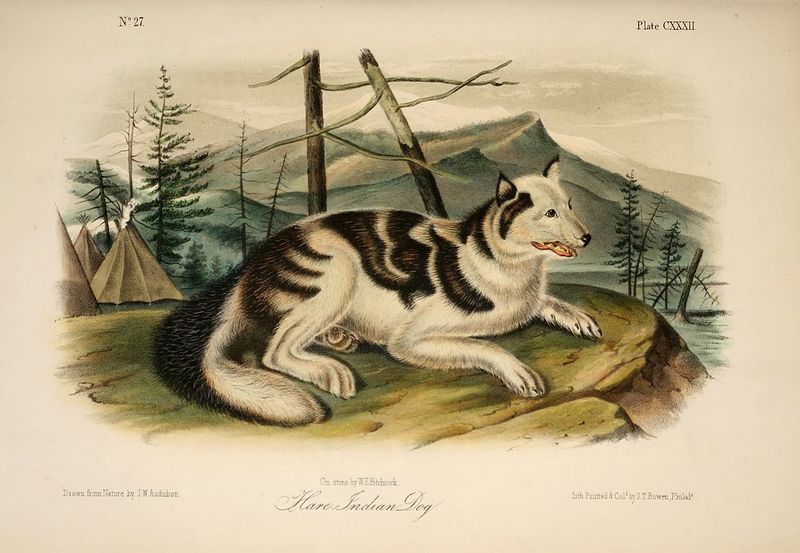
The Hare Indian Dog was a fleet-footed marvel, known for its speed and grace. Used by indigenous tribes in Canada, it was adept at hunting small game across snowy terrains.
Its slender build and keen instincts made it a master of the chase. However, the breed could not withstand the pressures of crossbreeding and changing hunting practices.
Although gone, the Hare Indian Dog remains a symbol of agility and the rich cultural tapestry of indigenous hunting traditions.
Old English Bulldog
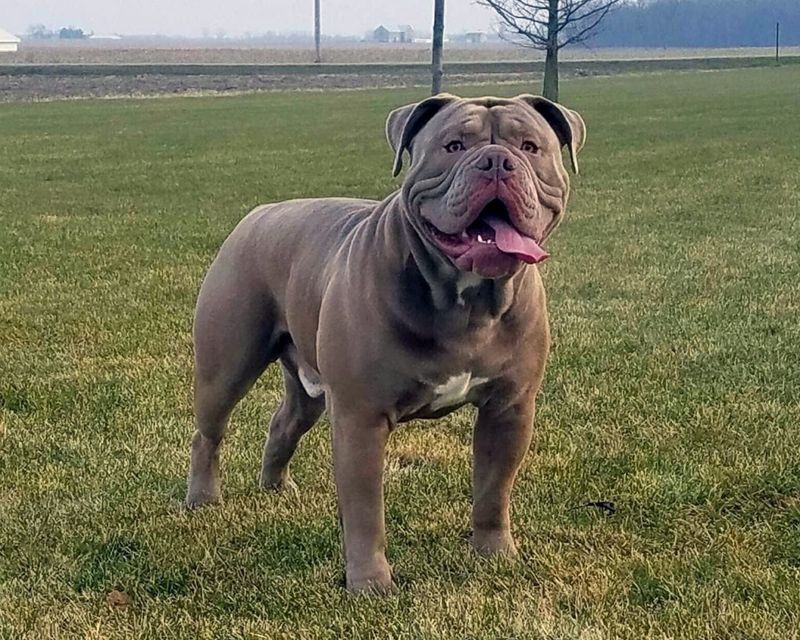
The Old English Bulldog was a gladiator of the canine world, bred for bull-baiting and known for its courage and tenacity. This stocky, powerful breed was a staple of 18th-century sport.
Its distinct appearance and fearless nature left a mark on history, even as the cruel sport was abolished and the breed faded away.
The Old English Bulldog’s legacy endures in modern bulldog breeds, a reminder of its storied past and the transformation of animal welfare practices.
Toy Bulldog
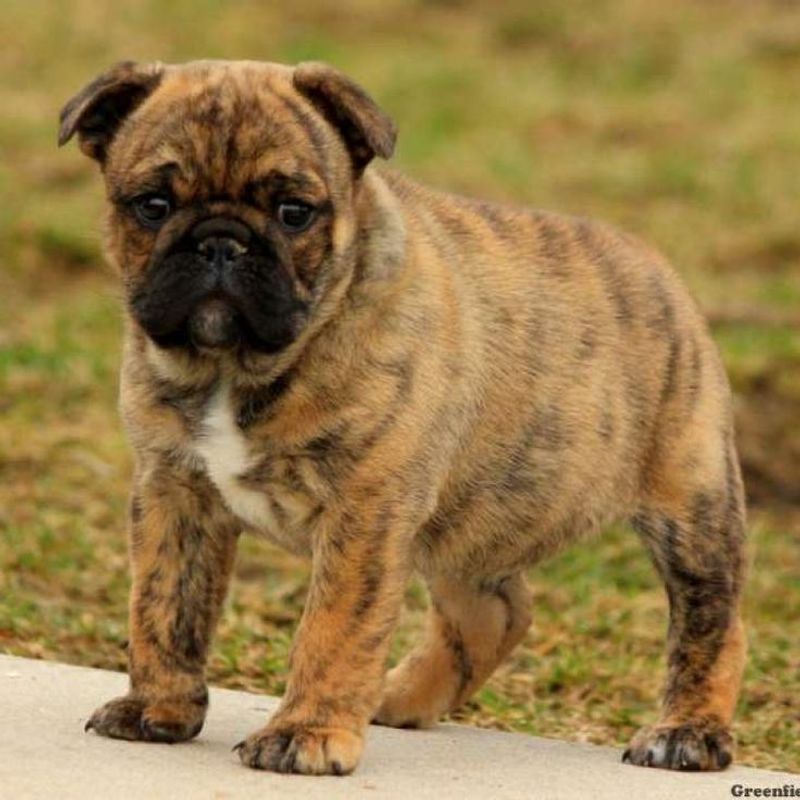
The Toy Bulldog was a charming companion, small yet spirited, wandering the streets of Victorian London. Known for its playful nature and compact size, it captured the hearts of city dwellers.
Though its lineage was absorbed into other breeds, the Toy Bulldog’s playful demeanor and adaptability are remembered fondly.
This little bulldog variant left a legacy of joy and companionship, influencing the development of modern toy breeds.
Bullenbeisser
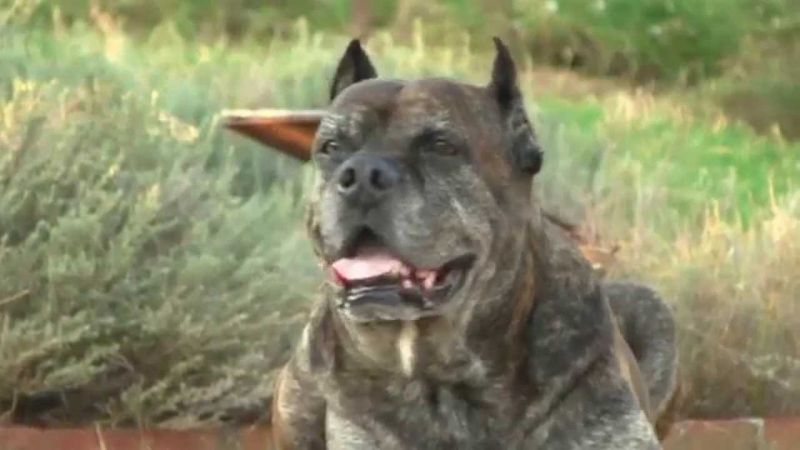
The Bullenbeisser was a hunter’s ally, known for its power and agility. This athletic breed, a precursor to the Boxer, was a fixture in German hunting expeditions.
With its keen senses and robust build, it excelled in tracking and capturing game. However, crossbreeding for specific traits led to its extinction.
The Bullenbeisser’s traits live on in the Boxer, a testament to its contribution to the development of modern working dogs.
Norfolk Spaniel
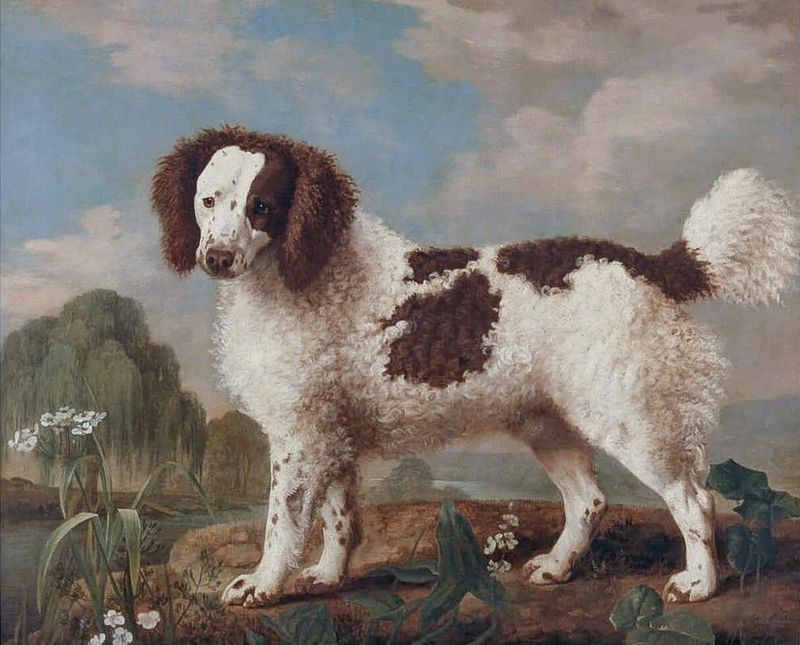
The Norfolk Spaniel was an elegant hunting companion, prized for its grace and effectiveness in the field. With long ears and a silky coat, it was a picture of beauty and function.
Unfortunately, its distinct line was absorbed into the English Springer Spaniel, a move that marked its extinction.
The Norfolk Spaniel’s legacy is seen in the grace and hunting prowess of its descendants, a lasting tribute to its excellence.
Turnspit Dog
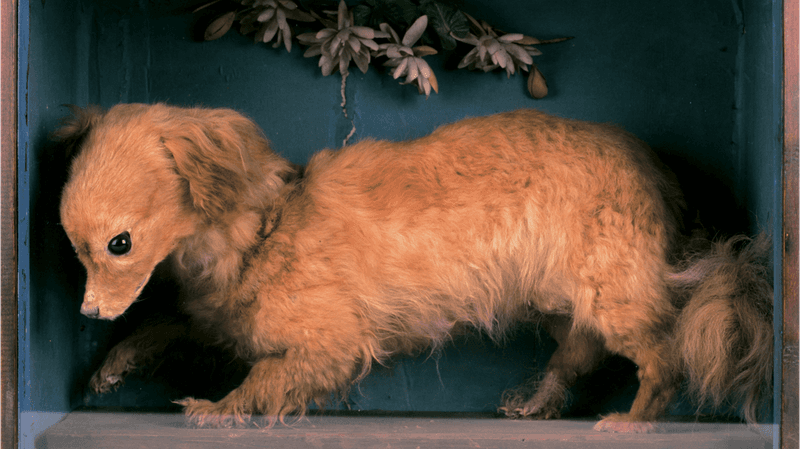
The Turnspit Dog was a culinary helper, known for its role in turning spits in kitchens. With short legs and a sturdy build, it was perfectly suited for its unique task.
This hardworking breed played a crucial role in the kitchens of 17th-century Europe, yet the advent of technology saw its decline.
The Turnspit Dog is a reminder of the ways in which dogs have been partners in human innovation and daily life.
Russian Tracker
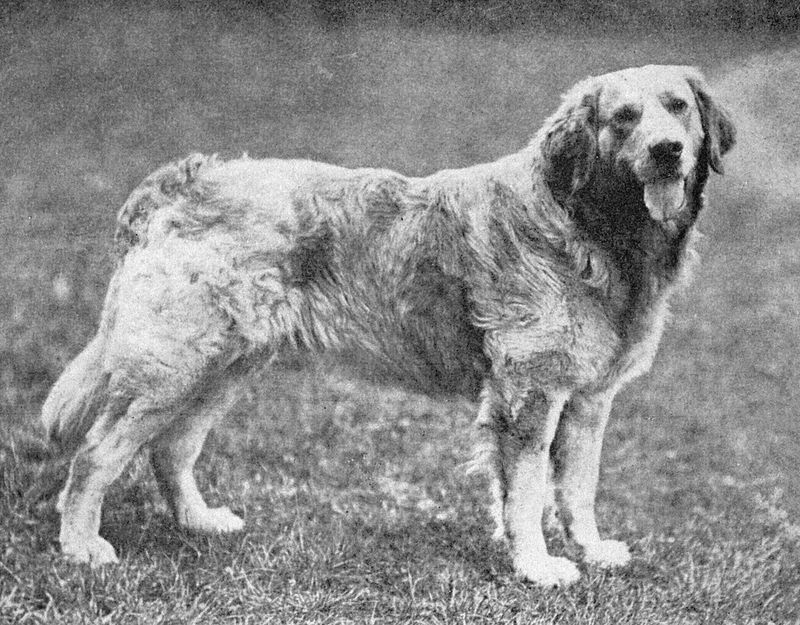
The Russian Tracker was a guardian of the wild, known for its imposing size and thick coat. This breed was essential for tracking game and protecting livestock in the harsh Siberian climate.
Despite its impressive capabilities, the Russian Tracker disappeared as modern breeds took its place.
Its legacy lies in the robust working dogs of today, a reflection of the breed’s enduring strength and adaptability.
Chien-gris
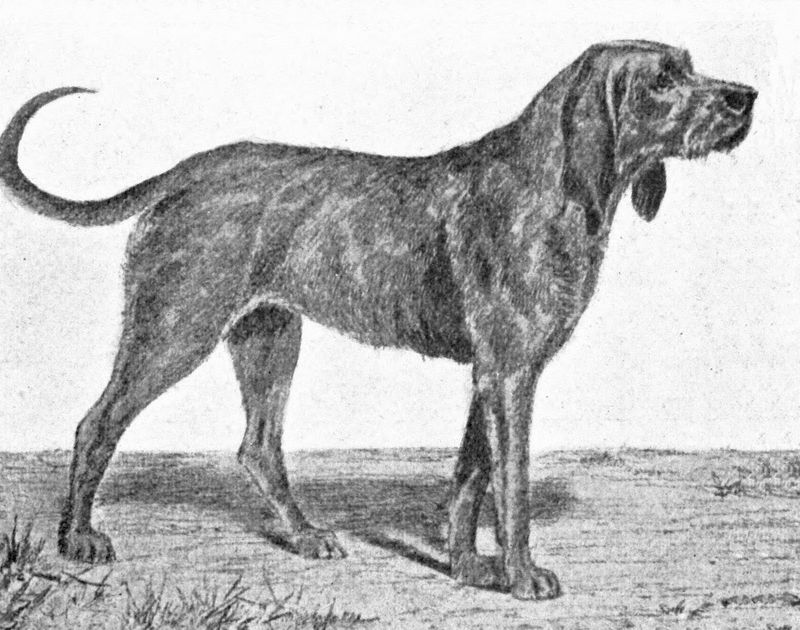
The Chien-gris was a noble hunter, known for its keen senses and rugged appearance. This medieval French breed was a favorite among nobility for its hunting prowess.
With long ears and a distinctive coat, it was a master of the hunt, yet it vanished as hunting practices evolved.
The Chien-gris remains a symbol of the rich history of canine companionship and the changing landscapes of hunting traditions.
Marquesan Dog
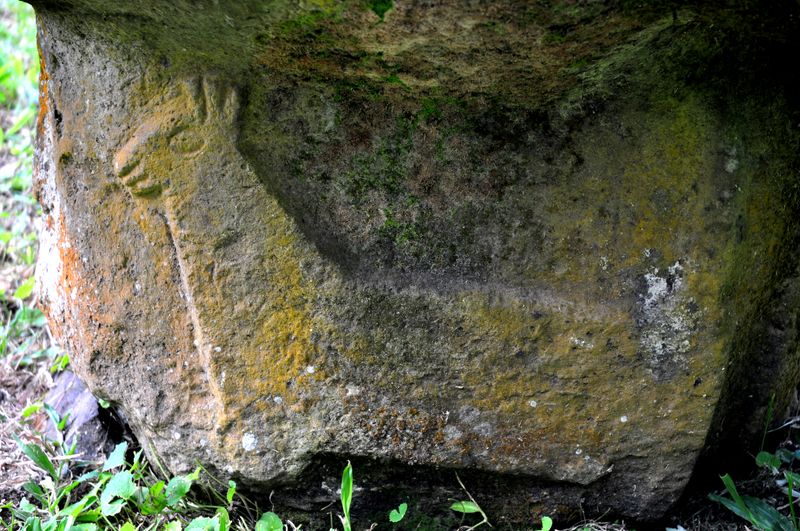
The Marquesan Dog was a small, agile breed, thriving in the lush landscapes of Polynesian islands. Known for its alertness and adaptability, it was a cherished companion of the Marquesan people.
However, the arrival of European settlers and their animals led to its extinction.
The Marquesan Dog serves as a poignant reminder of the impacts of colonization on indigenous species and cultures.
Chiribaya Dog
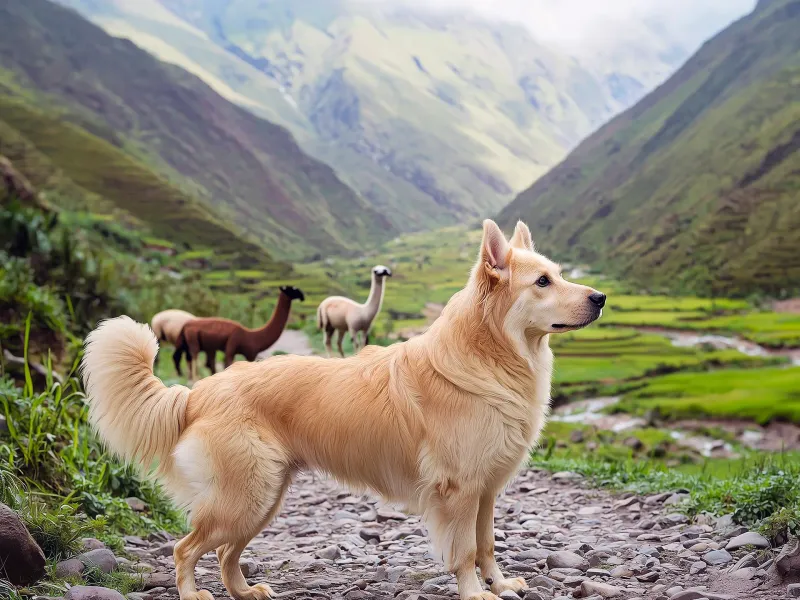
The Chiribaya Dog was a devoted companion of the Chiribaya people, known for its medium size and sturdy build. This breed was integral to the daily life of ancient Peruvian cultures.
Archaeological discoveries have revealed its role in rituals and daily activities, yet it vanished as cultures changed.
The Chiribaya Dog’s presence in historical records highlights the deep bonds between early civilizations and their canine friends.
Tesem
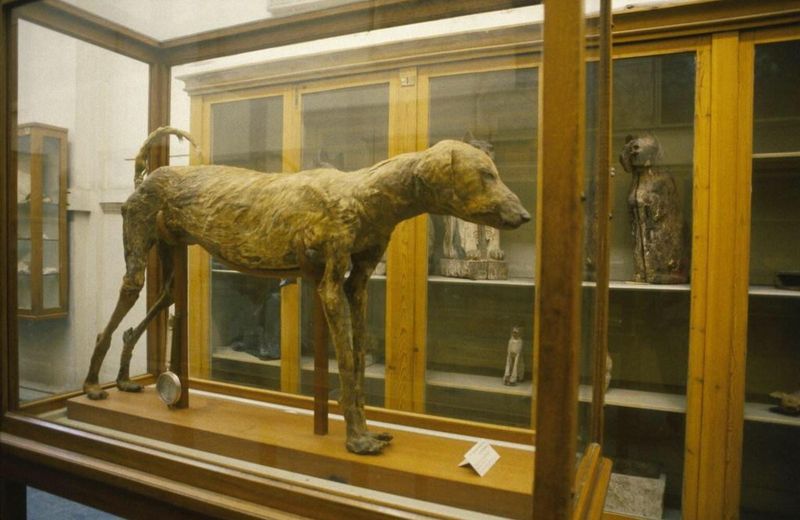
The Tesem was a symbol of elegance and grace in ancient Egypt, known for its slender build and keen instincts. Often depicted in art, this breed was a favorite of pharaohs and nobility.
Its disappearance coincided with the decline of ancient Egyptian culture, leaving behind a legacy of beauty and status.
The Tesem’s image endures in hieroglyphs and sculptures, a testament to its significance in a storied civilization.
English Water Spaniel
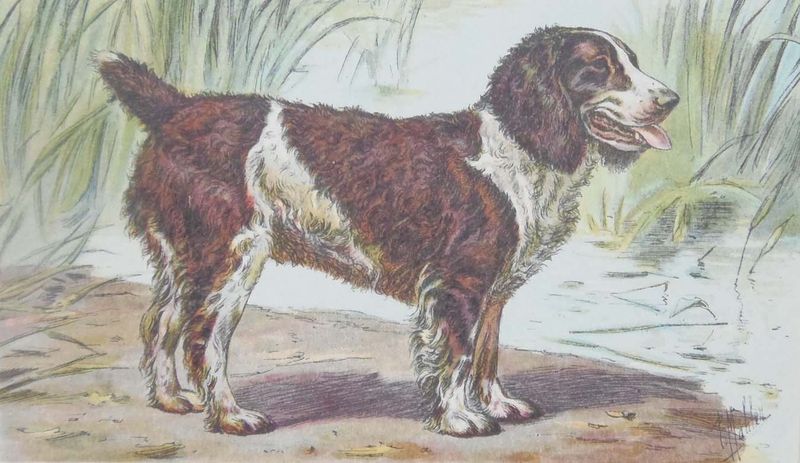
The English Water Spaniel was a lively swimmer, known for its curly coat and love of water. This breed was a favorite among hunters for retrieving game from rivers and lakes.
Despite its skills, it vanished as other spaniel breeds gained popularity and hunting methods evolved.
The English Water Spaniel is remembered for its energy and contribution to the development of modern water-loving breeds.
Braque du Puy
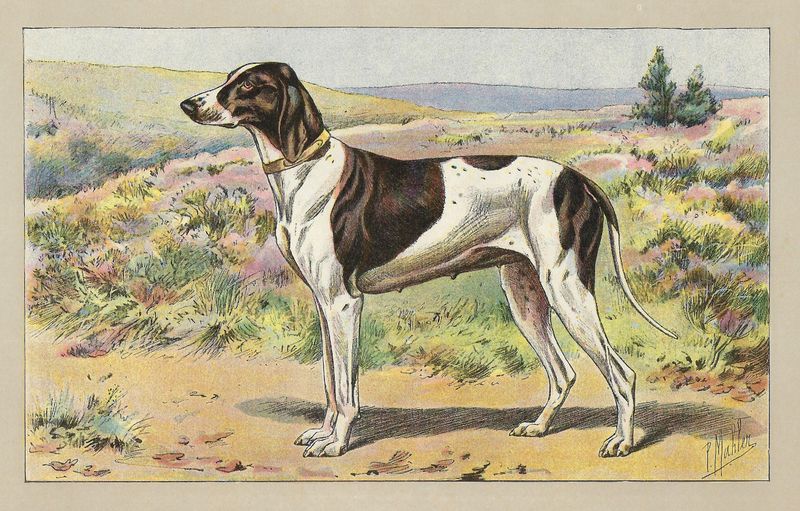
The Braque du Puy was a paragon of elegance, known for its slender build and hunting prowess. This French breed was a fixture in the sunny countryside, beloved by hunters.
Its extinction came as other pointer breeds rose to prominence, yet its legacy lives on in the traits of modern hunting dogs.
The Braque du Puy’s elegance and skill are celebrated in the annals of canine history, a tribute to its influence on the sporting world.

